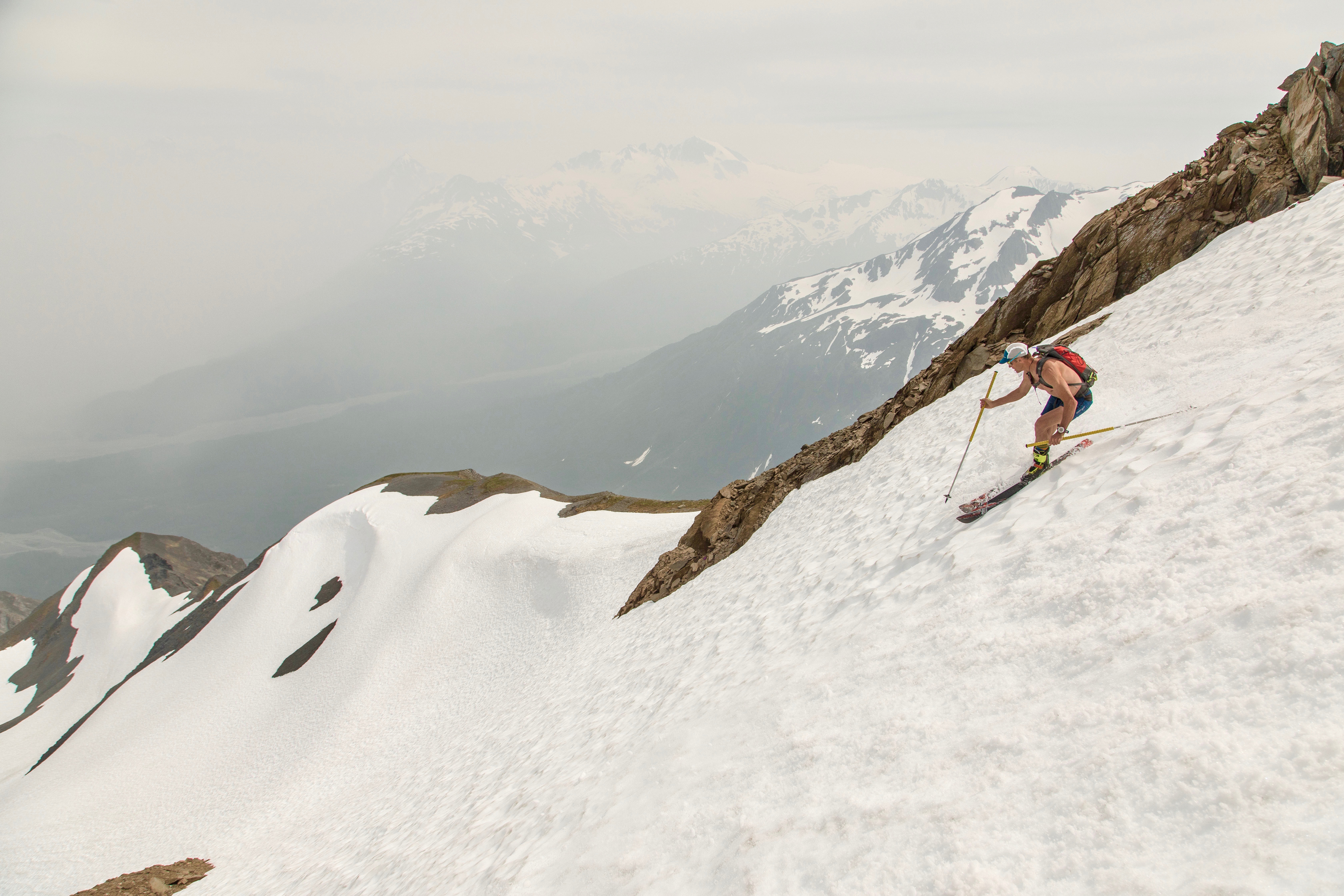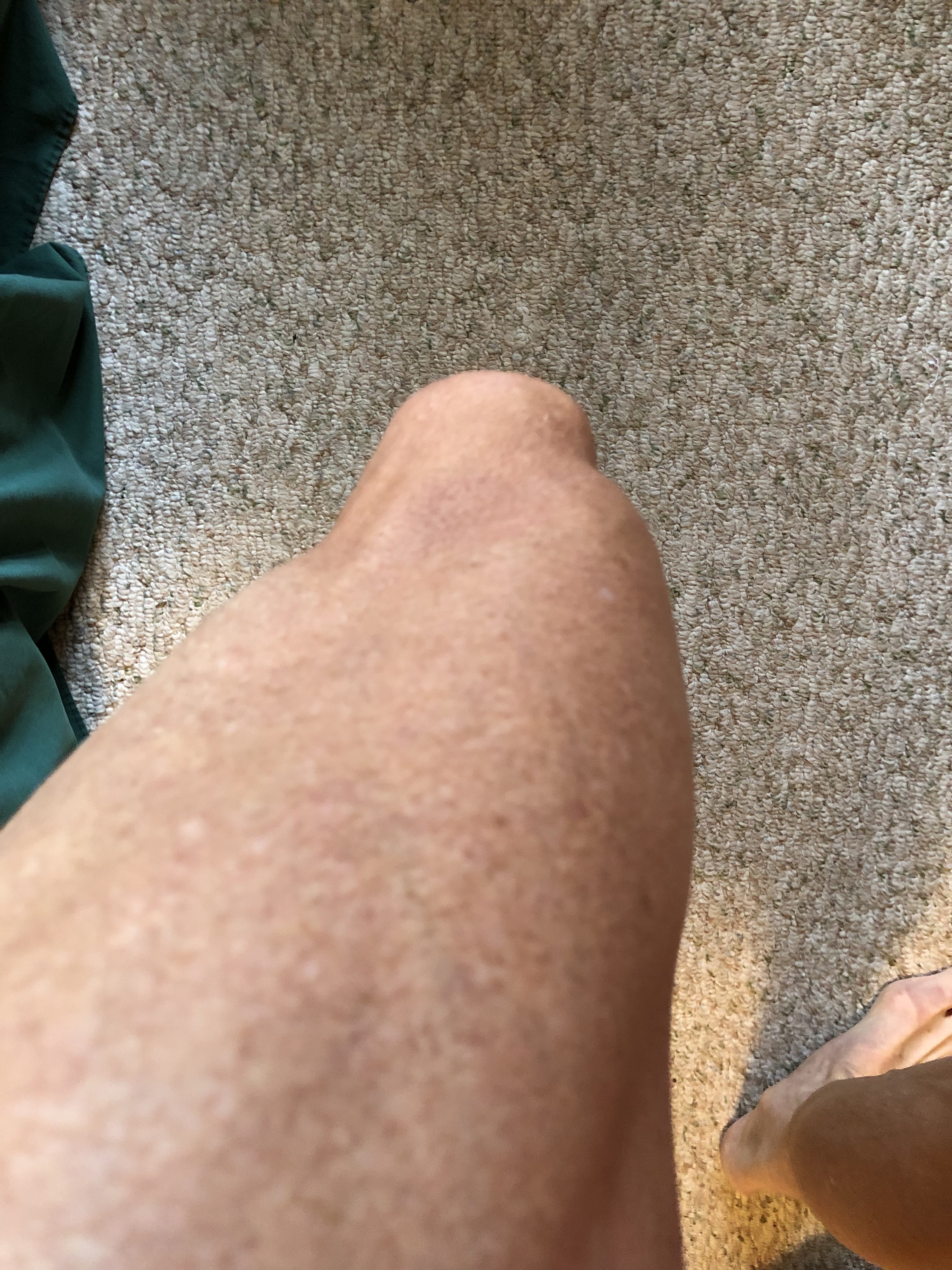 This post should conclude the Blown series of posts over the last 17 months. If you’ve been reading all along then you know my experience with my ACL reconstruction of my left knee has been bumpy, at best. The purpose of this final post is to report on my ultimate outcome as well as some thoughts for others facing a similar prospect now that I have hindsight in my favor.
This post should conclude the Blown series of posts over the last 17 months. If you’ve been reading all along then you know my experience with my ACL reconstruction of my left knee has been bumpy, at best. The purpose of this final post is to report on my ultimate outcome as well as some thoughts for others facing a similar prospect now that I have hindsight in my favor.
 Wallowing in the early summer smoke above the Harding Icefield, AKFor those following me on Instagram, you already know that I’ve been back skiing for the majority of the winter. I’d say that for the past 3 months, at least, I’m skiing at about 95%, with the only down turn in performance being a self-imposed speed reduction. Otherwise, I’m charging nearly all terrain in all conditions. For most of the season, I used a Donjoy ACL brace for all skiing. Sometime in late April I forgot to bring it on an after work corn session. I went anyway and felt fine. I decided that with the more predictable nature of spring skiing, I could live without it. I’ve had no issues since. There was a mental liberation of sorts once I committed to skiing brace-free.
Wallowing in the early summer smoke above the Harding Icefield, AKFor those following me on Instagram, you already know that I’ve been back skiing for the majority of the winter. I’d say that for the past 3 months, at least, I’m skiing at about 95%, with the only down turn in performance being a self-imposed speed reduction. Otherwise, I’m charging nearly all terrain in all conditions. For most of the season, I used a Donjoy ACL brace for all skiing. Sometime in late April I forgot to bring it on an after work corn session. I went anyway and felt fine. I decided that with the more predictable nature of spring skiing, I could live without it. I’ve had no issues since. There was a mental liberation of sorts once I committed to skiing brace-free.
I stuck to my rehab program, focusing on regaining the lost strength in my left leg and trying to correct the obvious atrophy of my quad. Something not quite right here.I clearly suffered some sort of neurologic injury to one of the branches of my femoral nerve, perhaps during the administration of my perioperative nerve block. You can see in the pictures that something very odd was going on. Over the months of training, most of it has resolved although one can still see something odd in my VMO. Although I have not done a formal assessment, I’m certain that there is still measurable weakness side to side.
Something not quite right here.I clearly suffered some sort of neurologic injury to one of the branches of my femoral nerve, perhaps during the administration of my perioperative nerve block. You can see in the pictures that something very odd was going on. Over the months of training, most of it has resolved although one can still see something odd in my VMO. Although I have not done a formal assessment, I’m certain that there is still measurable weakness side to side.  Better nowOn the other hand, I don’t really notice this when running, hiking, cycling and skiing.
Better nowOn the other hand, I don’t really notice this when running, hiking, cycling and skiing.
With the dry weather this summer in Alaska, I went on a cycling binge after skiing ended in July. I decided to drop the weight training for a period just to have the mental break. Now as September gets rolling, I’m back in the weight room gearing up for the demands of my first turns, hopefully in a few short weeks. The wetness has returned to South Central AK so the snow will fall with the temperatures.
Hindsight
Looking back on my experience with ACL reconstruction, I’d say my biggest challenge was dealing with a necessary loss of physical conditioning that comes with any injury and surgery. I ended up with about a 5 week layoff between injury and surgery. It was a struggle emotionally to lose something I’d spent my life maintaining. In the grand scheme, this “loss” was nothing compared to people who suffer far more grievous injuries but was nonetheless significant for me. Looking back, the advice I’d give to myself is to try and relax more and simply let it go, knowing that it’s almost assuredly recoverable. This is even more important in the early rehab phase. I was in such a hurry to get riding and get stronger that I pushed hard even when my knee wasn’t really ready for it. Fighting through pain and stiffness is certainly part of the deal but I think doing so more slowly than I did makes things easier in the long run. For sure, once my joint was “quiet” after a few months, gains were easier.
Of course, some peoples’ joints quiet down sooner than others. I’m still convinced that my reaction to my cadaver graft was more severe than others. I remained swollen and lacked full extension for months. I don’t think this was due solely to my enthusiasm but rather some hard-to-define technical issue from the operation itself. I don’t think I’ll ever know.
I have another friend who blew his knee around the same time as I did. I wrote him a note asking him if he was charging through his rehab, riding and lifting so he could get back to guiding. Nonchalantly he mentioned that he hadn’t done much of anything for 3 months. My jaw dropped. And yet when he finally got to it, he eased back into a full summer of guiding in Chamonix and the Alps without a hiccup. Maybe there’s a lesson there for all of us going forward.
Closing Thoughts
What would I do differently if I had to do it all over again? First of all, I think having a bone-to-bone interface in the tunnels of the femur and/or tibia improves healing time and the early strength of the graft fixation. Asking tendon to heal to bone is a bigger ask, for sure. That said, tens of thousands of hamstring grafts have been used successfully. But if you ask a bunch of surgeons, many would admit that the Gold Standard of grafts is an autograft made from patella bone-tendon-bone. In a patient younger than 35 years old, I’d be tempted to recommend nothing else. But if I was pushed, I’d go with what I wished I had gone with in the first place and that is a quad tendon autograft. Check out this for a full discussion. I wish I had simply searched out a surgeon with a fair number of these under his/her belt and traveled there for the surgery. My own tissue from a lower morbidity donor site with a bone plug on one end seems like the best compromise of all the options. On the other hand, I had an email discussion recently with a surgeon with a fair amount of experience with the quad tendon autograft and he feels that he no longer needs the bone plug end to get a good result. The shorter graft is both thick and stiff.
Following surgery, I’d probably do nothing but range of motion work and nearly resistance free stationary cycling for a month. I’d want a quiet knee with little or no swelling before adding any sort of challenge in rehab. Hopefully, I won’t have to heed my own advice again any time soon. Thanks for coming along. I hope this helps some of you during your own recovery. Cheers.